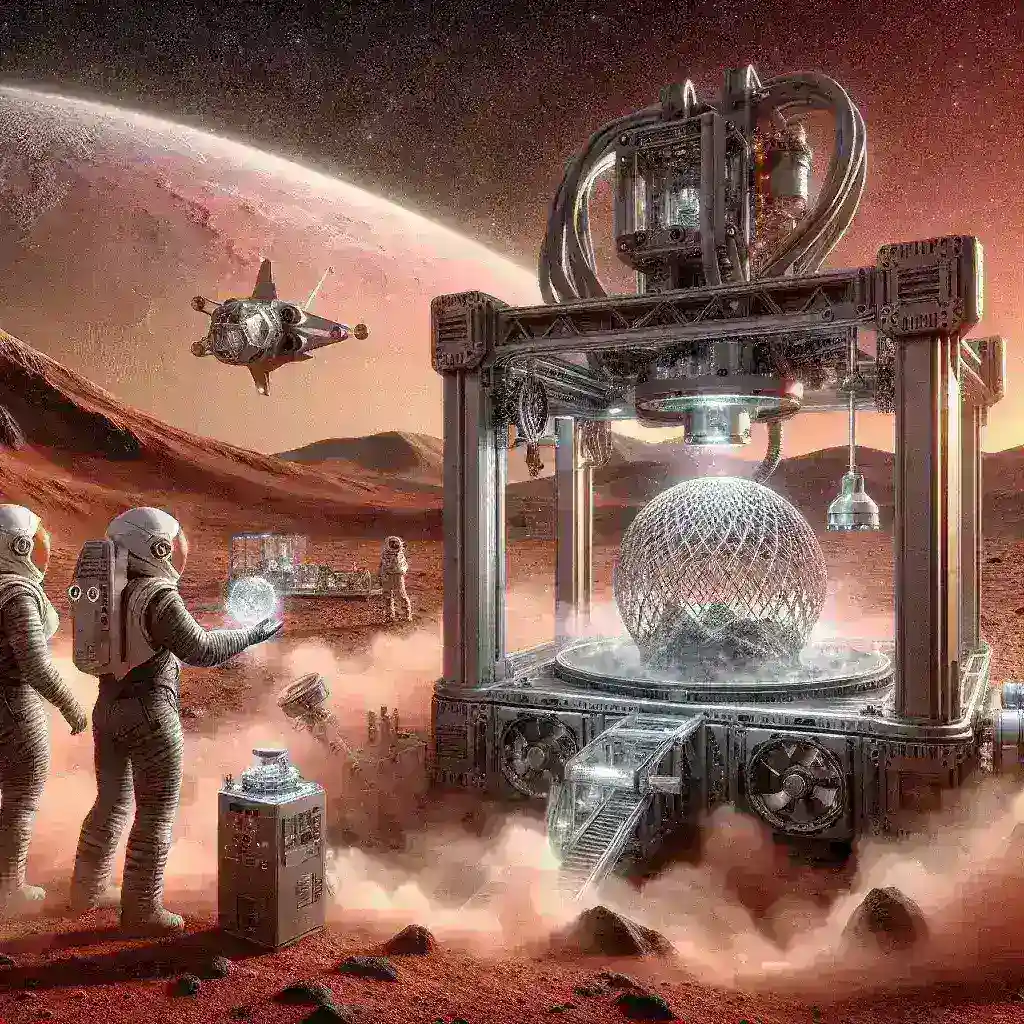The Dawn of Martian Colonization
As humanity sets its sights on Mars, the dream of colonizing the Red Planet is becoming a reality. Recent advancements in 3D printing technology have paved the way for constructing habitats that can support life on Mars. This article delves into the innovative methods of using indigenous materials in creating sustainable living environments for future inhabitants of Mars.
Understanding 3D Printing in Space Exploration
3D printing, or additive manufacturing, has revolutionized many industries on Earth, and its application in space exploration is particularly promising. This technology allows for the layer-by-layer construction of objects, which is crucial when considering the logistical challenges of transporting materials from Earth to Mars.
Advantages of 3D Printing for Mars Habitat Construction
- Resource Efficiency: Utilizing local materials reduces the need to launch heavy payloads from Earth.
- Customization: 3D printing allows for the rapid prototyping of habitat designs tailored to specific needs and environmental conditions.
- Waste Reduction: This technology minimizes waste, as it only uses the material necessary for construction.
- Speed: 3D printing can significantly accelerate the construction process.
The Role of Indigenous Materials
Indigenous materials refer to the natural resources available on Mars, which can be used to create building materials for habitats. These include regolith, a fine dust and rocky material found on the Martian surface, and ice deposits that can be converted into water or building components.
Types of Indigenous Materials
- Martian Regolith: This dust-like material can be used to create concrete-like mixtures for habitat construction.
- Ice: Ice deposits can provide water for drinking, agriculture, and even as an ingredient for concrete.
Research and Development Initiatives
Research teams and organizations like NASA and SpaceX have been exploring methods to utilize these indigenous materials effectively. For instance, scientists have been conducting experiments on how to process Martian regolith to create durable building materials.
Historical Context of Mars Exploration
The journey to Mars has been a long one, dating back to the early 20th century when scientists first theorized about the possibility of life on other planets. The first missions to Mars, such as the Viking landers in the 1970s, laid the groundwork for our understanding of the planet’s environment, composition, and potential for human habitation.
Successful Missions Leading Up to Habitat Construction
- Viking Program: Provided crucial data on Martian soil and atmosphere.
- Curiosity Rover: Analyzed Mars’ surface and confirmed the presence of water.
- Perseverance Rover: Currently exploring the Jezero Crater for signs of ancient life and gathering samples.
Future Predictions for Martian Colonization
As technology continues to advance, we are likely to see significant progress in the coming decades. Predictions suggest that by the mid-2030s, we could establish the first human habitats on Mars, driven by 3D printing techniques leveraging local materials.
Potential Developments
- Automated Construction: Robots might handle the construction process, minimizing human risk.
- Bioregenerative Life Support Systems: These systems could recycle air and water, enabling long-term human presence.
The Pros and Cons of 3D Printing with Indigenous Materials
Pros:
- Decreases dependency on Earth for materials.
- Enhances sustainability by reducing waste.
- Can create structures uniquely suited to Martian conditions.
Cons:
- The technology is still being tested and developed for such extreme conditions.
- Potential challenges in material processing and durability.
Real Examples of 3D Printed Structures
Several Earth-based projects have demonstrated the viability of 3D printing for construction purposes. For example, the ICON company has successfully printed homes using vulcanized concrete, showcasing the potential for quick, sustainable building techniques. These innovations offer a glimpse into what might be possible on Mars.
Cultural Relevance of Martian Habitats
The colonization of Mars holds significant cultural implications. It represents a new frontier for humanity, reflecting our innate desire to explore the unknown and push the boundaries of what is possible. The creation of habitats on Mars will not only serve practical purposes but also symbolize human ingenuity and resilience.
Conclusion
As we stand on the brink of a new era in space exploration, the construction of habitats on Mars using 3D printing and indigenous materials represents a transformative approach to colonization. By leveraging local resources and innovative technology, we can lay the foundation for sustainable human life on the Red Planet. The journey is just beginning, and the possibilities are as limitless as the universe itself.








Leave a Reply